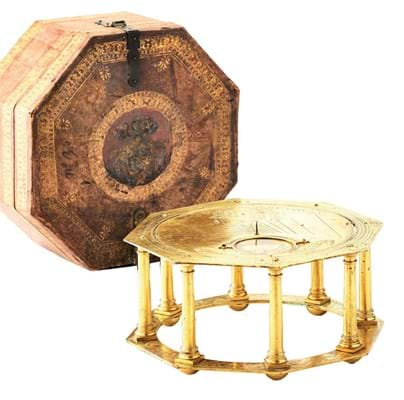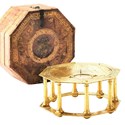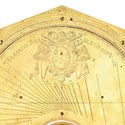The instrument consists of a disc engraved with various sets of dials, suspended in a two-tier octagonal stand which can swivel between two horizontal positions to expose different sets of dials to the sun, and also has a gimballed compass to assist with orientation. It comes with an octagonal leather-covered, wooden-lidded case which bears a papal coat of arms.
The 10in (26cm) wide brass dial is attributed to Carlo Plato, a maker of astronomical and time-measuring instruments working in Rome in the last decade of the 16th century. At this time, there was a flourishing industry in Europe for the production of scientific instruments such as these which were high-status objects. Their makers were often in the employ of grand or princely families.
Papal history
The attribution to Plato, who signed himself as Carolus Plato, has been made on the basis of the dial’s similarity to other instruments that are either signed by or attributed to him.
The auction house points out in the cataloguing that the date of 1591 precedes the reign of Clement VIII from 1592-1605, although the years around then were a turbulent time for the holy see with several popes in rapid succession.
It also notes that while the engraving of date and the crossed keys and papal tiara is original, there appears to be alteration to the oval escutcheon in the centre and the papal name at the bottom.
A possible hypothesis, it adds, is that the dial was commissioned for one of Clement VIII’s predecessors but never delivered and that the maker replaced the name of the original recipient with Clement’s.
The dial has a later provenance to the collection of the noble family Leijonhufvud, from Goksholm Castle in Sweden. It is estimated at SKr1.5-2m (€142,000-189,000).


















